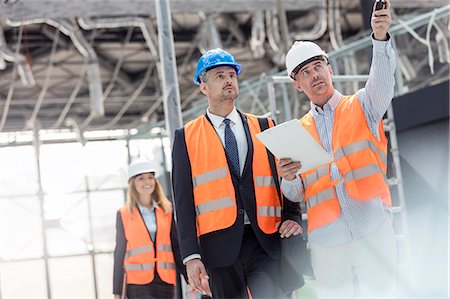Ensuring the safety of construction workers is not only a legal necessity but also a moral imperative for business owners and entrepreneurs. The construction industry is fraught with potential hazards, from heavy machinery and high elevations to hazardous materials. Each year, numerous accidents and injuries highlight the critical need for stringent safety measures. By prioritizing the well-being of their workforce, businesses can not only comply with regulatory requirements but also foster a positive and productive work environment, which in turn can lead to higher morale and better performance on the job.

Investing in safety protocols and training can have a profound impact on a construction company’s overall success. A safe worksite reduces the risk of accidents, which can lead to costly downtime, legal liabilities, and damage to the company’s reputation. Moreover, a strong safety culture can attract skilled workers who value their health and safety, further enhancing the company’s operational efficiency. In this guide, we will explore essential strategies for maintaining a safe construction site, covering everything from comprehensive training programs and personal protective equipment (PPE) to the use of cutting-edge technology and fostering a culture of safety.
Implement Comprehensive Training Programs
Training is the cornerstone of a safe construction site. Regularly conduct comprehensive safety training programs that cover hazard identification, proper use of equipment, and emergency procedures. This ensures workers can recognize potential hazards, use machinery safely, and know how to react in emergencies.
Equip Workers with Personal Protective Equipment (PPE)
Personal Protective Equipment (PPE) is essential in protecting workers from site-specific hazards. Ensure that your workers are equipped with helmets to protect against falling objects, high-visibility clothing to ensure they are seen by machinery operators, safety boots to protect their feet, and gloves, goggles, and ear protection to safeguard their hands, eyes, and hearing.
Maintain Equipment and Machinery
Regular maintenance of construction equipment is critical. Schedule routine checks and servicing to prevent malfunctions and ensure efficiency. Well-maintained equipment operates more efficiently, reducing the likelihood of operator error and preventing accidents caused by faulty machinery.
Utilize Technology for Safety Monitoring
Leverage technology to enhance safety measures on your construction site. Consider using wearable technology to monitor workers’ vital signs and environmental conditions. For example, for employees who work alone in remote or hazardous areas, lone-worker solutions, such as the one developed by Neovigie, can detect risks, such as falls, violence, and other hazards. Additionally, in case of an emergency, alerts are transmitted to all safety personnel and emergency response teams. Furthermore, drones can be used to inspect hard-to-reach areas and monitor site safety from above. Safety apps that allow workers to report hazards and access safety information quickly can also be implemented and encourage employees to report unsafe conditions quickly and easily. Utilizing technology for the safety of your personnel allows to significantly reduce the risk of accidents and enhances overall site safety.
Enforce Site Safety Protocols
Establish and enforce strict safety protocols on your construction site. Conduct daily site inspections to identify and mitigate hazards, use clear and visible signage to indicate hazardous areas and required PPE, and hold regular safety meetings to discuss potential risks and reinforce safe practices.
Foster a Culture of Safety
Creating a culture of safety involves more than just rules and equipment. Encourage open communication, where workers can report hazards and unsafe practices without fear of retribution. Implement a rewards system for safe behavior and adherence to safety protocols, and ensure that management demonstrates a commitment to safety, setting an example for all workers.
Ensure Compliance with Regulations
Stay up-to-date with local and federal safety regulations. Compliance not only avoids legal repercussions but also ensures your site meets the highest safety standards. Regularly review and update your safety policies to align with the latest regulations.
Emergency Preparedness
Prepare for the unexpected with a robust emergency response plan. Ensure a sufficient number of workers are trained in first aid, maintain an updated list of emergency contacts, and develop clear evacuation plans. Conduct regular drills to ensure all workers are familiar with them and can act quickly in case of an emergency.
Conclusion
In conclusion, the safety of construction workers should be a top priority for business owners and entrepreneurs. By implementing comprehensive training programs, equipping workers with essential personal protective equipment, maintaining equipment, enforcing strict safety protocols, fostering a culture of safety, utilizing advanced technology, ensuring regulatory compliance, and preparing for emergencies, companies can significantly reduce the risk of accidents and injuries on their construction sites. These measures not only protect workers but also contribute to the overall success and reputation of the business.
A proactive approach to safety demonstrates a company’s commitment to its workforce, which can lead to higher employee morale, increased productivity, and a more positive workplace environment. It also helps attract and retain skilled workers who value their well-being. Ultimately, a safe construction site is a reflection of a well-managed, responsible business. By prioritizing safety, business owners and entrepreneurs can create a sustainable, successful operation that stands out in the competitive construction industry. Remember, investing in safety is investing in the future of your business.
